
Thorpe Academy: "Send us the boy and we return to you a little man"
Making It Home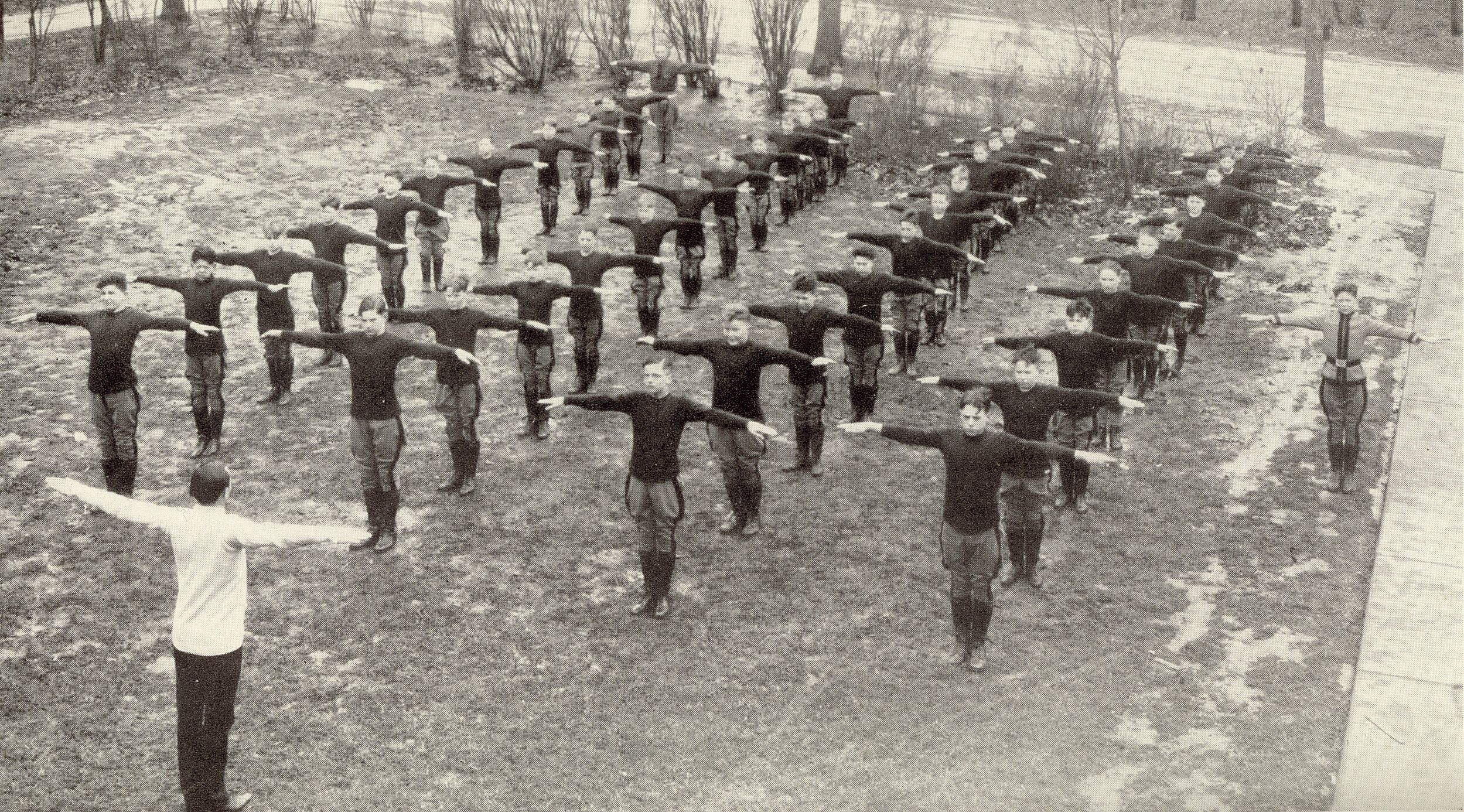

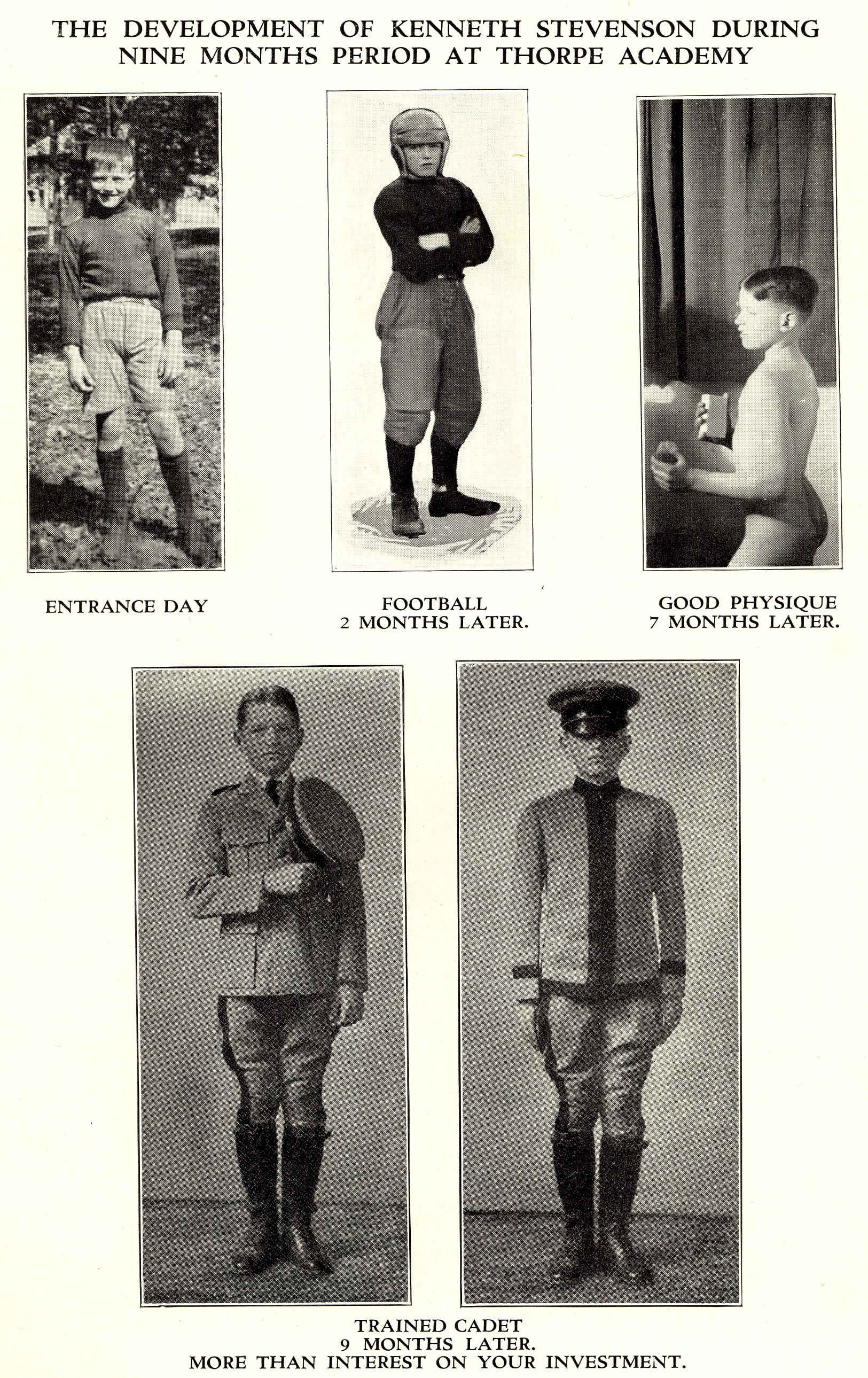
A chronological, pictorial representation of the benefits of Thorpe Academy from its 1923 catalog.
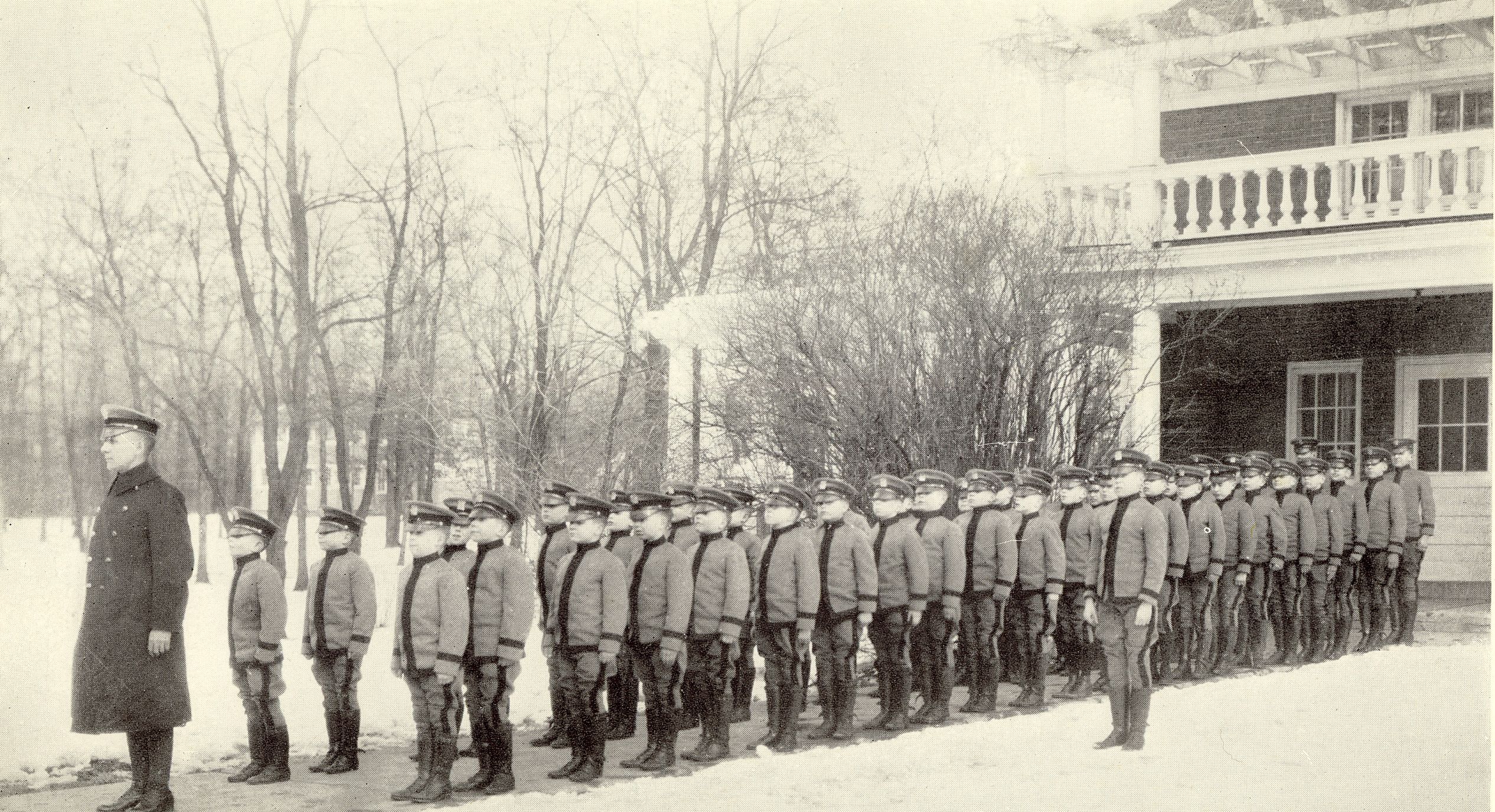
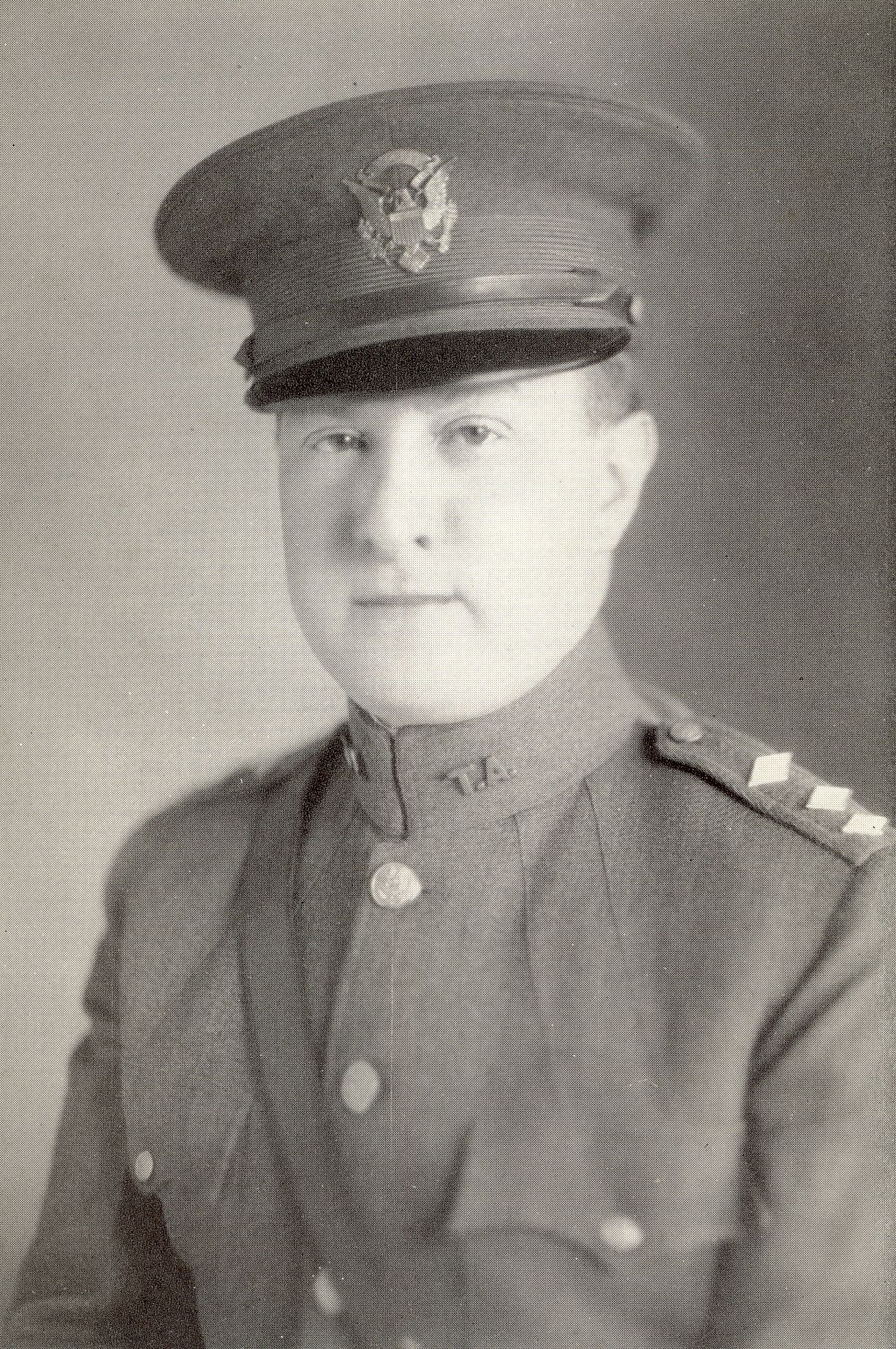
Thorpe Academy founder Colonel William Frederick Thorpe.
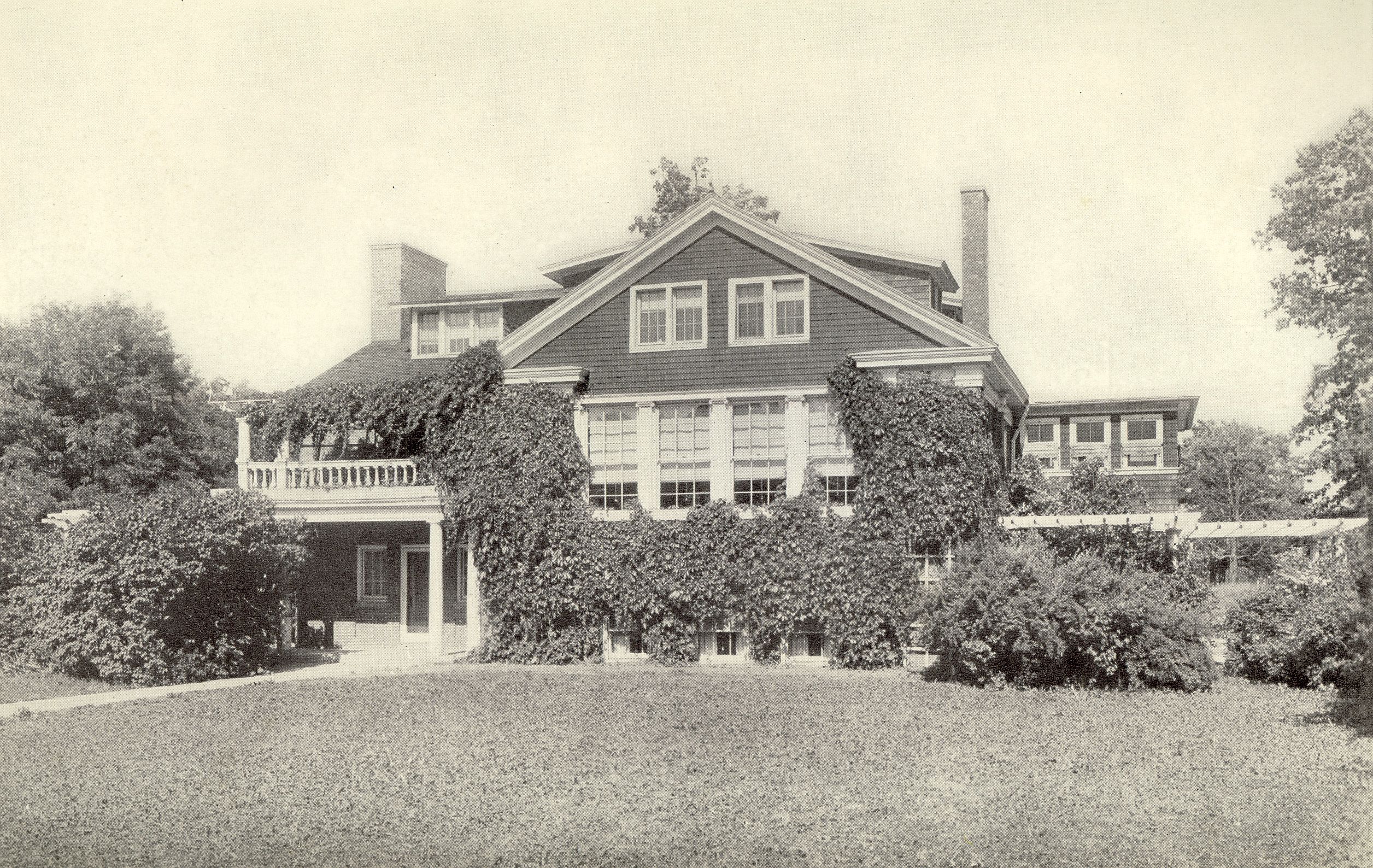
Main building.
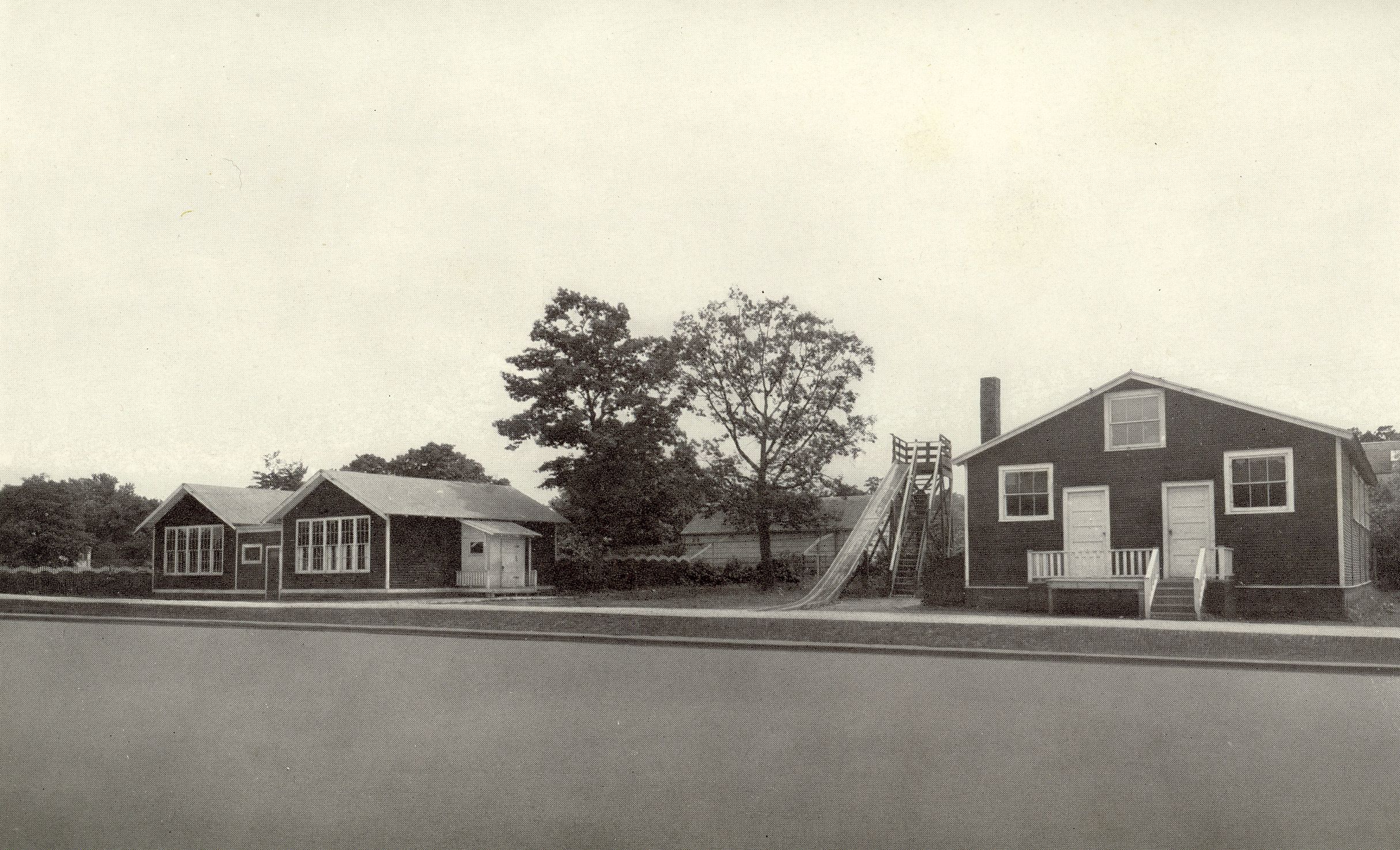
Cabins.
“Send us the boy and we return to you a little man.” So promised the admissions catalog of Thorpe Academy, a short-lived school for boys ages 6-16 located in Lake Forest. Thorpe was the brainchild of Colonel William F. Thorpe, who opened the school shortly after his discharge from the army in 1919. Its curriculum was based on a plan of “semi-military” regulation: boys wore uniforms instead of “citizens’ clothes,” completed drilling exercises, and kept military hours.
The time-honored military tradition of reveille awakened students at sunrise; they then proceeded straight to callisthenic drills before breakfast.
The school was aimed at Chicago executives who sought both increased discipline and fresher air for their boys. Col. Thorpe knew his audience, and advertised his school as a product they had a duty to buy: “An expenditure, or even a sacrifice, made by a father for the purpose of building a character, unfolding the real man in a son becomes a most profitable investment….” All this character building did not come cheap: a year’s tuition and board cost $1,375, high even for the elite. This likely led to the school’s closure in the 1930s.
Thorpe featured the usual array of drama clubs and athletic teams. One student society set it apart from other schools with its exacting motto: “Learn to be Perfect.” This was the Knights of Perfection, an organization founded by the students to enforce the school’s rules. Members of this group would blow the whistle on classmates who cursed, read trashy books, or failed to shine their shoes before dinner. Five cents a week was the typical fine for each violation.
The Thorpe “cadets,” as the students were called, line up for a winter hike. Through the 1920s, the school was at its capacity of 52 boys, with 21 staff members.
Thorpe Academy was located on seven acres at Sheridan Road and Spruce Avenue. The headmaster’s residence once housed the Anderson Strawberry Farm. Campus included a main building, a gymnasium, and cabins for students, teachers, and house mothers.
